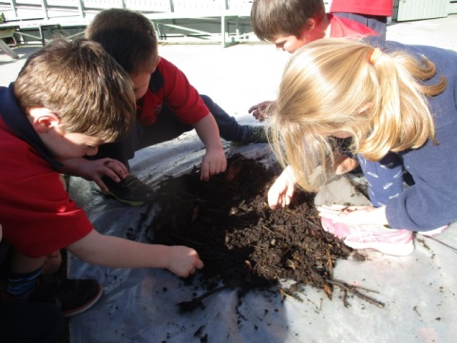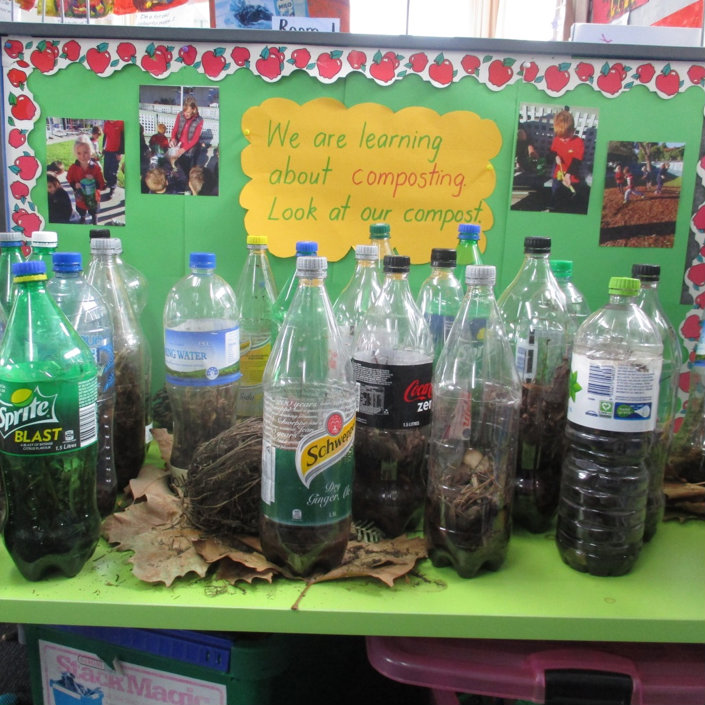Kids’ Edible Gardens update
Although it has been cold and wet outside, Marlborough students have been keeping up with their winter gardening tasks. Over the next few weeks, we’ll be sharing some of the learning that went on in Term 2 at schools in Marlborough’s ‘Kids’ Edible Gardens’ programme.
Witherlea School
While the growth of vegetables slowed with the onset of winter, the children kept busy by investigating composting. Before getting started, they looked at soil with very little organic matter or compost and compared it to soil in their vegetable garden. The soil from the vegetable garden was darker, fluffier and had lots of insects living in it. It was a good way to learn how compost improves the soil. After talking about what goes into a compost heap, the children made mini ‘compost heaps in a bottle’, learning that a compost heap is a living thing, and that like us, it needs warmth, air and water to survive.

Finding out what lives in the compost
Keeping with the compost theme, the children went on to look at the insects, bacteria and fungi that decompose garden and kitchen scraps. It was a messy affair as they tipped a bucket of compost onto a tarpaulin to examine what was inside it, but it was one that the children loved!
The children discovered that it is beneficial to plant a green crop over winter: not to harvest vegetables for them to eat, but to feed the soil instead. The green crop is grown until it reaches 50 cm tall, before digging it into the soil. All of the nutrients in the plants will decompose into the soil. This means that when summer vegetables like corn, tomatoes and cucumbers are planted, they will have a good supply of nutrients to grow strong and healthy.
When sowing the green crops the students noticed that the seeds were all a little different, but found out that all these plants have something in common: they have special nodules on their roots that make nitrogen. Nitrogen is a food that plants need a lot of to grow big green leaves.
As the Matariki stars appeared in the sky, students learnt that two Matariki stars represent their edible garden. Tupuānuku represents everything that grows within the soil for food, and Tupuārangi represents everything that grows (or lives) in trees – fruit, berries, and birds. As it was too frosty to work outside, the children celebrated Matariki by making stars decorated with pictures of fruit and vegetables that grow in their garden, and kites made from recycled fizzy bottles and plastic bags.

